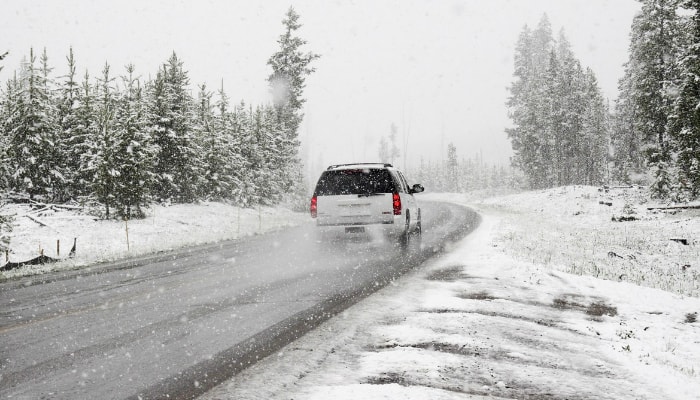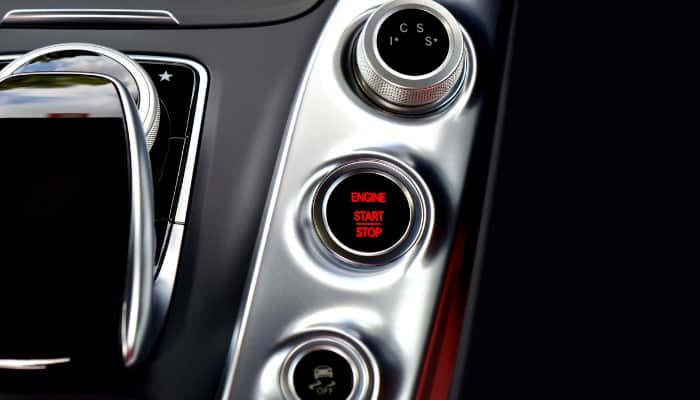Gasoline is essential as fuel for different modes of transportation. However, like any other liquid, it freezes eventually in certain temperatures. To avoid mechanical issues just because of frozen fuel, at what temperature does gasoline freeze?
What Is the Composition of Gasoline?
We can understand better the exact answer to the question “At what temperature does gasoline freeze?” by identifying the elements that compose gasoline.
First off, gasoline is not a plain substance. It is not pure at all. Instead, it is a mixture of various hydrocarbons and additives – hundreds in quantity. Common ones are ethanol, toluene, octane, hexane, and heptane. On the other hand, optional ones are butane and pentane depending on a certain area’s winter climate. Most chemicals mentioned can have several structural forms called isomers. That leads to the fact that all things forming gasoline have their own melting point. Obviously, they also have different freezing points.
At What Temperature Does Gasoline Freeze?
You might have thought about the answer already based on the fact that gasoline is a mixture. At what temperature does gasoline freeze again? None exactly. Gasoline does not have the so-called freezing point. The same idea goes for candle wax and diesel. Rather, gasoline has a freezing range.
While the temperature is descending, gasoline is changing gradually. The first part is little bits of sediments and gums coming out of the liquid. Next, when it gets extremely cold, the heaviest hydrocarbon molecules like cyclo-heptane and iso-nonane slowly solidify. They would look waxy. Now, when the temperature gets more and more intolerable, gasoline becomes much waxier and slushier until the remaining liquid elements are the lightest molecules.

Meanwhile, some sediments form due to impurities in the gas tank. Cold temperature just makes them even more solid. Fortunately, the filter located in the fuel line can actually catch these sediments. Things get worse only if gasoline becomes extremely waxy. In this stage, we are talking -40 to -200 degrees Fahrenheit. The range is wide since gasoline has various types of mixtures and blends. Another factor is the source of gasoline’s crude oil.
Since refineries can actually tweak a particular mixture of gasoline, they can provide special blends for areas with an extremely cold climate. They can make gasoline have a lower freezing range. An example is ethanol gas.
What Are the Symptoms of a Frozen Fuel Line?
It is impossible to talk about the symptoms of frozen gasoline. Long before gasoline ever freezes inside the car, the first elements to get frozen are water and water vapor. So, let’s talk about the signs of a frozen fuel line instead. After all, the point of asking “At what temperature does gasoline freeze?” is to prevent extreme winter issues car owners may face.
When both water and water vapor freezes inside the automobile, they block gas in the fuel line from entering the engine. To find out if gasoline is already blocked by frozen water, here are symptoms to watch out for:
Constant Stopping or Sputtering During Movement
Some people find the need to drive their car even if the outdoor temperature gets unbearably cold. The bad news is that no matter how the car generates heat while you are driving, the gas tank can still freeze. You would definitely know if the tank is already malfunctioning due to cold. The car would start to stall or sputter. Actually, even if the tank is still okay, a frozen gas line can still provide this symptom.

Failure to Start
You should not worry too much if the engine does not start. As long as it can still turn over, just wait until the temperature gets warm enough. With patience, your car can work normally even if it is freezing outside. As you can see, you must not wait until gasoline freezes inside the car. Simply take care of your car frequently during winter.

Failure to Turn Over
While the fuel line is still freezing – not totally frozen yet – the engine can still turn over even though it cannot start anymore. You would know if the fuel line is already at its worst if the engine completely fails to turn over. Don’t worry; there are ways on how to fix a frozen fuel line.
How Can We Fix a Frozen Fuel Line?
When push comes to shove, here are practical solutions in thawing a frozen fuel line:
Push your car into an enclosed area.
In the first place, as soon as you hear winter is coming, make sure that your vehicle is in a safe place. It is purely a bad idea to leave your car in the open during winter. In a worst-case scenario such as leaving your car in the front yard overnight until snow falls, the initial step you need to do is to push your car towards the garage. However, make sure that you prepared the area. The garage must be dry and warm to successfully thaw the frozen fuel line. Waiting will take hours, but the whole idea is effective. To speed up waiting time, turn on kerosene or electric heaters inside the garage, specifically facing the car. This makes the thawing process faster to one hour only. Be careful though; cars are really flammable so put a big space between the heat source and the automobile.
In case you would experience a difficult time getting your car out of the snow, check out how to make the first attempt and proceed to plan B if necessary.
Put antifreeze additives in the tank.
No matter what season it is, go to an automobile parts store and purchase antifreeze additives. These treatments are very useful during winter, so always remember to have one in your garage. It is recommended to put two to three bottles of antifreeze treatments into the tank. You still have to wait for a few hours to let the antifreeze completely mix with the fuel, but it really works. You can also make the waiting time faster. Just rock the car back and forth to make the antifreeze blend with the gasoline quickly.
How Can We Prevent a Frozen Fuel Line?
To avoid all the hassle of thawing a frozen fuel line, prevention is key. Here are some tips on how to keep the fuel line from freezing aside from keeping the car inside your garage:
Keep the tank full.
This lessens moisture in the system. Water vapor is the main culprit for freezing fuel lines after all. Condensation produces water, and we all know that water freezes in cold temperature.

Add antifreeze treatment.
Antifreeze is both a solution and a prevention factor when it comes to frozen fuel lines. Just make sure to follow the product’s instructions.
Summary
For the last time, at what temperature does gasoline freeze? The exact answer is none. Gasoline is composed of various elements with different freezing points. So, basically, it does not have a freezing point. Rather, it has a range of temperatures that gradually change the fuel’s original liquid form. Based on various types of gasoline mixtures and blends, the usual range is -40 to -200 degrees Fahrenheit. Gasoline is already considered frozen if it turns into a thick sludge or wax. To totally avoid frozen gasoline inside the car, focus on preventing the fuel line from freezing during winter. When you take good care of the fuel line, prevention of frozen gasoline follows.
For other concerns involving gasoline, learn why some cars smell like gas when parked. On a positive note, find out essential habits that help you save gas.










